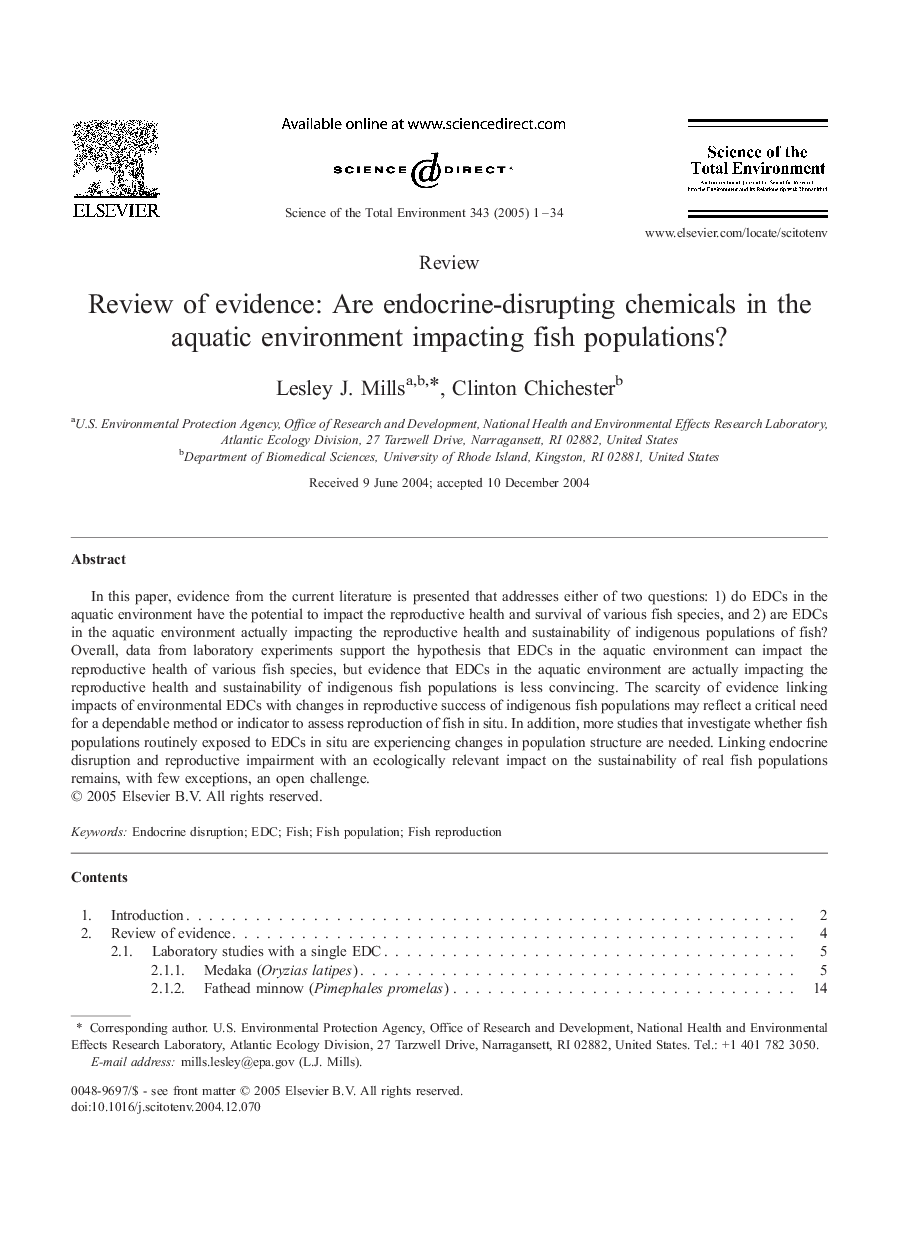| Article ID | Journal | Published Year | Pages | File Type |
|---|---|---|---|---|
| 10110831 | Science of The Total Environment | 2005 | 34 Pages |
Abstract
In this paper, evidence from the current literature is presented that addresses either of two questions: 1) do EDCs in the aquatic environment have the potential to impact the reproductive health and survival of various fish species, and 2) are EDCs in the aquatic environment actually impacting the reproductive health and sustainability of indigenous populations of fish? Overall, data from laboratory experiments support the hypothesis that EDCs in the aquatic environment can impact the reproductive health of various fish species, but evidence that EDCs in the aquatic environment are actually impacting the reproductive health and sustainability of indigenous fish populations is less convincing. The scarcity of evidence linking impacts of environmental EDCs with changes in reproductive success of indigenous fish populations may reflect a critical need for a dependable method or indicator to assess reproduction of fish in situ. In addition, more studies that investigate whether fish populations routinely exposed to EDCs in situ are experiencing changes in population structure are needed. Linking endocrine disruption and reproductive impairment with an ecologically relevant impact on the sustainability of real fish populations remains, with few exceptions, an open challenge.
Related Topics
Life Sciences
Environmental Science
Environmental Chemistry
Authors
Lesley J. Mills, Clinton Chichester,
